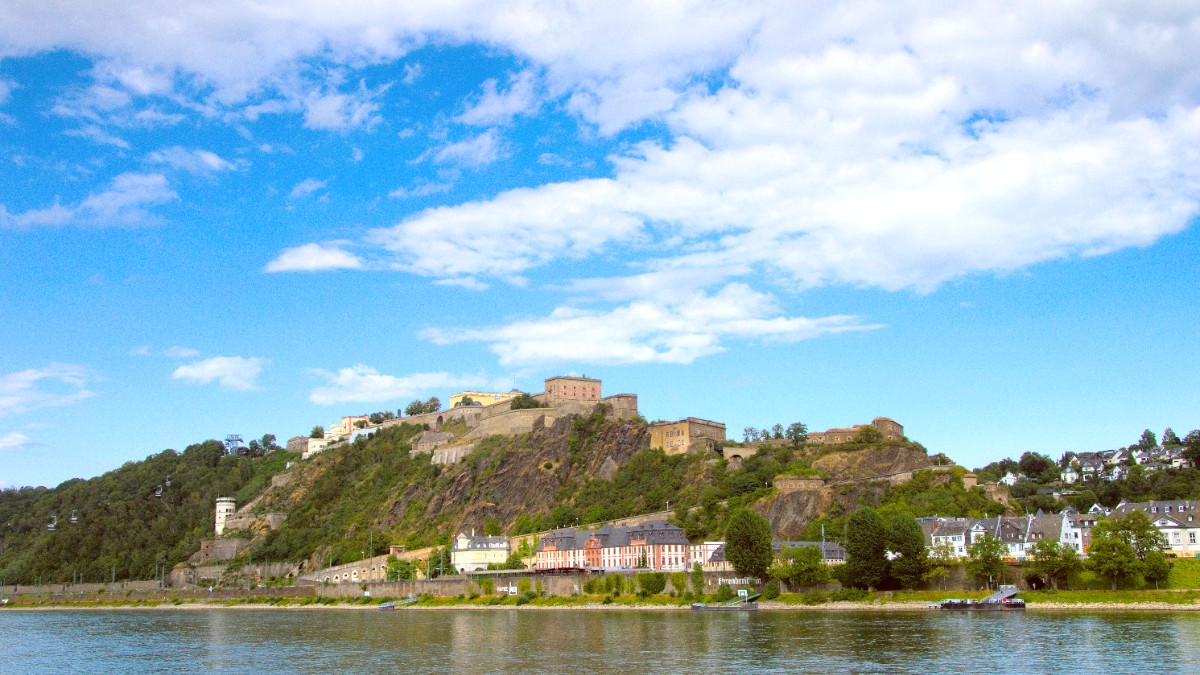
Germany
The city's landscape includes four surrounding low mountain ranges. To the northeast, the Westerwald has rolling hills and dense forests. The Hunsrück rises to the south with ancient woodlands and quiet valleys. To the west, the Eifel region is a volcanic landscape, while the Taunus mountains stand to the east. These natural formations contribute to the city's scenic backdrop, influencing its climate and providing opportunities for outdoor activities.
Koblenz is one of Germany's oldest urban centers, its origins in Roman history. Its foundation dates to a Roman fort established around 9 BCE, signaling early strategic importance. The city's name, derived from the Latin "Castellum apud Confluentes," directly references its unique geographical position at the merging of the Rhine and Moselle rivers.
Throughout the medieval period, Koblenz held significance as a seat for the prince-archbishops of Trier. This long period saw construction of numerous religious and civic buildings that shape the Altstadt's character today. After the Congress of Vienna in 1815, Koblenz became a Prussian military and administrative hub, with the construction of the formidable Ehrenbreitstein Fortress.
Koblenz, with approximately 115,000 residents, maintains a welcoming, manageable atmosphere while still offering urban amenities. Tourism forms a considerable part of its economy, drawing visitors eager to explore its history, natural beauty, and famous river valleys. The city's role as a starting point for Rhine and Moselle river cruises, as well as a base for exploring the UNESCO World Heritage Upper Middle Rhine Valley, solidifies its position as a travel destination. Wine trade is a prominent place in Koblenz's economic and cultural life due to its proximity to the Moselle and Middle Rhine wine regions, renowned for their Riesling varieties. Visitors experience local wine culture directly.
Beyond tourism and wine, Koblenz serves as an important administrative center for the Rhineland-Palatinate state. The city's services, public transport, and general upkeep reflect its administrative standing.
Iconic confluence point with Emperor William I statue.
Europe's second-largest preserved fortress, high above the Rhine.
Charming historical essence with cobblestone streets, shops, cafes.
World-renowned for dramatic landscapes, castles, vineyards.
Famous for its winding river, charming wine villages, accessible from Koblenz.
Koblenz serves as a recognized gateway to the UNESCO World Heritage Upper Middle Rhine Valley, stretching between Koblenz and Bingen/Rüdesheim. This region is world-renowned for its dramatic landscapes, an astonishing number of medieval castles, terraced vineyards that cling to steep slopes, and picturesque villages. Travelers often choose Koblenz as their base for exploring this valley, taking scenic river cruises or hiking sections of the Rheinsteig trail.
The city's long period saw the construction of numerous religious and civic buildings that still shape the Altstadt's character today. This historical architecture blends with modern infrastructure, telling a story of enduring culture.
Despite extensive damage during World War II, Koblenz underwent meticulous rebuilding efforts in the post-war period. This reconstruction was a careful process of preserving the city's historical essence while integrating modern infrastructure.
To get the best feel for the city, start your visit at Deutsches Eck, then take the cable car to Ehrenbreitstein Fortress. These two sites introduce Koblenz's unique character.